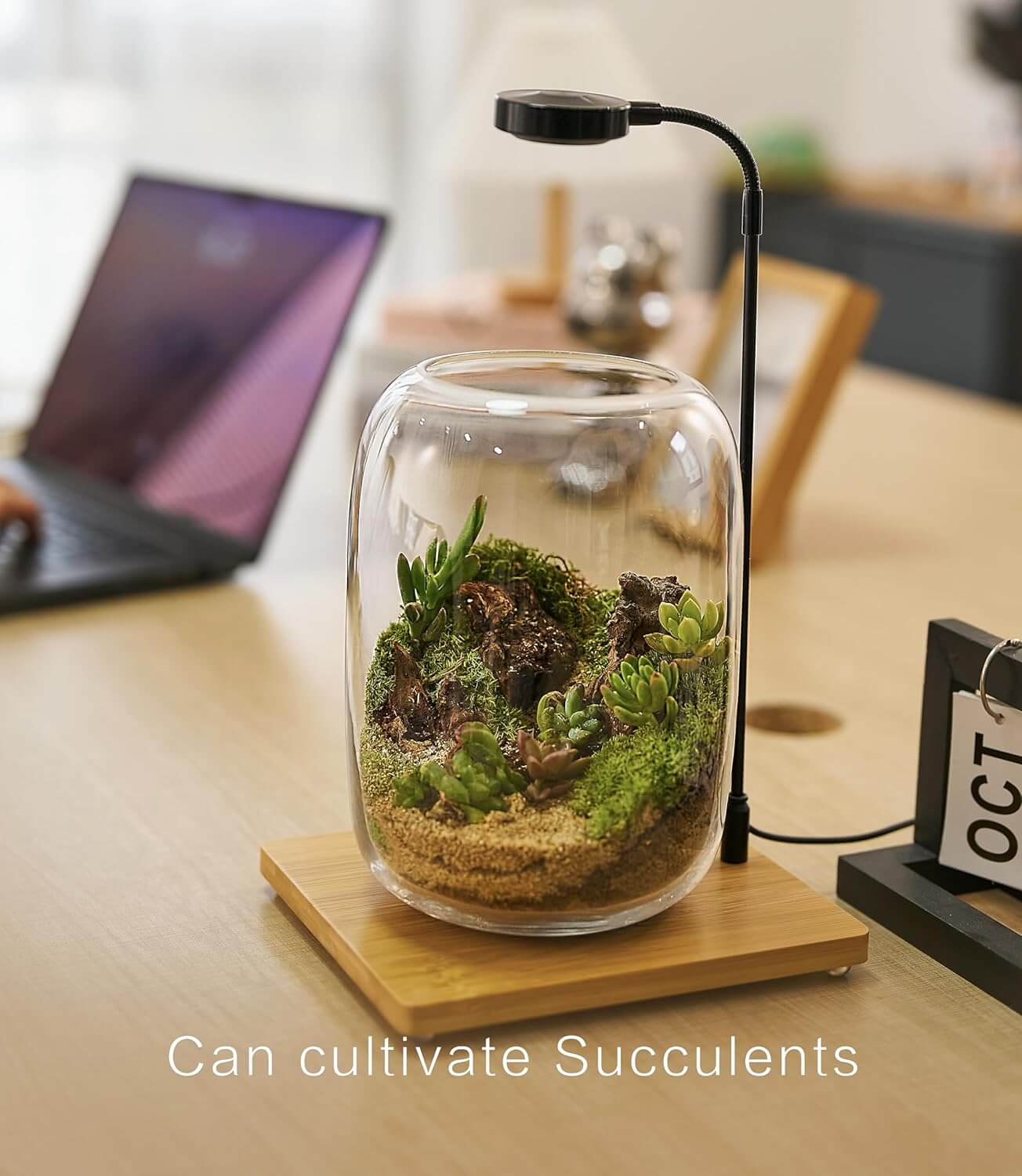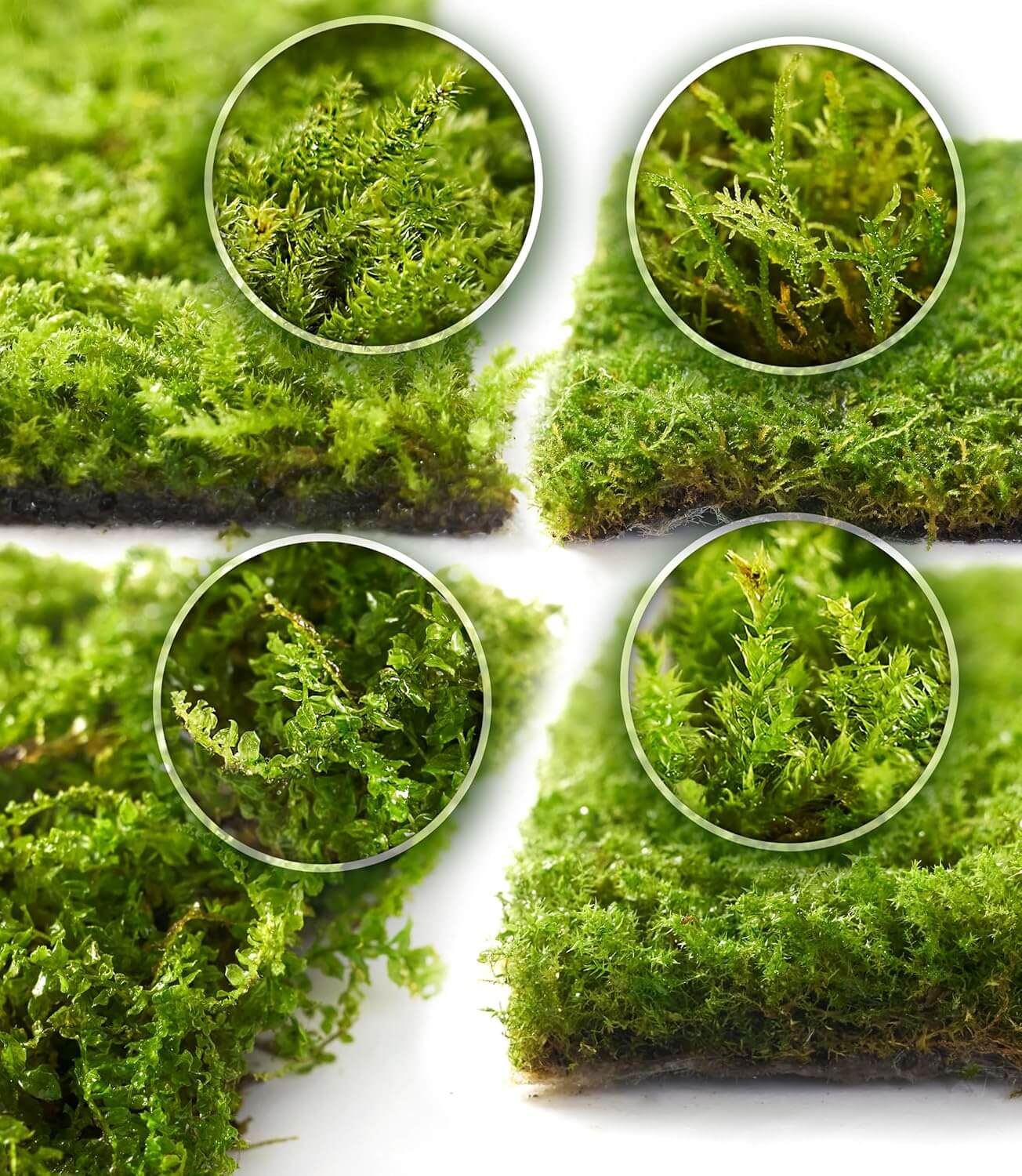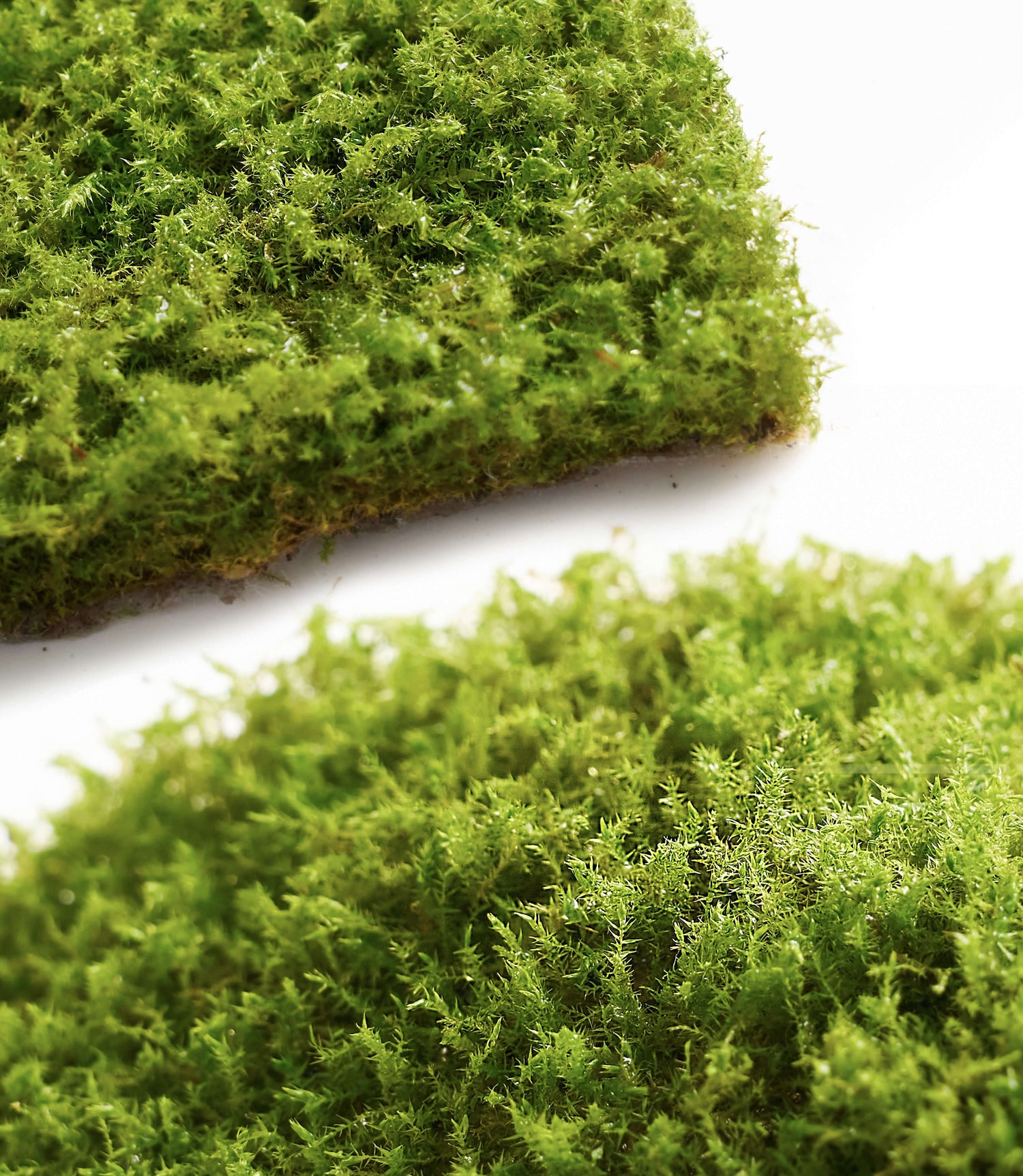🌿 What is a Terrarium?
Imagine a small oasis in a transparent glass container with all kinds of plants: soft, fluffy moss, sturdy ferns, and spreading vines. When a ray of sunlight shines through, the inside of the glass is flooded with tiny droplets of water from photosynthesis. Listen to their breathing as if they were in your ear, and they are quietly growing right next to you.
This is the magic of the terrarium.
Definition of Terrarium

A terrarium is a closed or semi-closed transparent container, usually made of glass. We need to build a self-sufficient micro-ecosystem inside. Its name comes from Latin - “terra” (earth) and ‘aquarium’ (container), like "aquarium (aquarium)“‘aqua’ is aquatic, aquatic and” aquarium" containers and together is the home of the fish, terrarium is a small universe of plants from the earth.
According to the different containers, there are two main types of ecological bottles:
- Closed terrarium: usually with a lid, suitable for simulating the humid environment of q tropical rainforest. The water circulation in the bottle is self-consistent, there is almost no need for additional watering, is the gospel of lazy people.
- Open terrarium: no lid, suitable for succulents, air bromeliads and other plants that prefer a ventilated and dry environment.
 ⛈️How does it “live”? --The mystery of small ecological cycle
⛈️How does it “live”? --The mystery of small ecological cycle
The charm of terrarium is not only beautiful, but it is a small ecosystem that can survive on its own!
 Sunlight shines through the glass on the plants and soil, water evaporates and condenses on the inner wall of the glass, then drips back to the soil, a cycle that mimics the water cycle in nature. In the bioactive terrarium, small bugs (e.g., echinoderms and isopods) in the bottle can also “clean” the dead leaves, decompose organic matter, and help the plants to absorb nutrients to form a stable micro-ecosystem.
Sunlight shines through the glass on the plants and soil, water evaporates and condenses on the inner wall of the glass, then drips back to the soil, a cycle that mimics the water cycle in nature. In the bioactive terrarium, small bugs (e.g., echinoderms and isopods) in the bottle can also “clean” the dead leaves, decompose organic matter, and help the plants to absorb nutrients to form a stable micro-ecosystem.
A small system like this, according to the available record of the longest-lived closed terrarium , has been alive for more than 55 years!
🪴The use of the terrarium: more than just a “pretty jar”
The terrarium was first created in London in the 19th century as an “accidental result” of a botanical experiment. At that time, botanist Nathaniel Bagshaw Ward accidentally discovered that plants in sealed glass could survive for weeks without care, and so the terrarium was born as a method of transporting plants across continents.
 Since then, the terrarium has become not only a Victorian fashion, (known then as Fern Fever), but also an art form that blends gardening, design and science.
Since then, the terrarium has become not only a Victorian fashion, (known then as Fern Fever), but also an art form that blends gardening, design and science.
Today, terrariums fit all:
- Urbanites who don't have a yard but love greenery
- Those who want to create a corner of greenery that doesn't need to be taken care of
- People who love handmade DIY and nature healing.
- Families who want to plant their first “forest seed” with their children.
 🌱What kind of plants are suitable for terrariums?
🌱What kind of plants are suitable for terrariums?
Plants in the terrarium can be the main character, such as the aquarium, or the supporting role, such as the aquatic and terrestrial, reptile tanks. Regardless of the kind of tank, plants of different forms and colors play multiple roles in maintaining the humidity cycle, producing oxygen, and building visual layers. Let's put them into the category of “main character plants”.
The “main character” of plants in terrariums usually has the following characteristics:
- Likes high humidity, needs light, but does not have a high demand for light.
- Moderate or even slow growth rate, will not quickly grow all over the bottle.
- Shallow root system, easy to plant, suitable for survival in small space.
- Adaptable to the environment, not easy to get sick.
According to this criterion, we can basically determine the following list of “star plants”:
1、 Mosses
- Characteristics: simple planting, simple hydration is enough; It can cover a variety of materials, such as stone, wood, of course, the most basic is still on the soil, which can cover a large area.
- Ecological function: lock in water and moisturizing, fix the substrate, and beautiful greening
- Recommended species: Leucobryum Glaucum moss, Plagiomnium acutum moss, Haplocladium moss if it is open, Hypnum Cupressiforme moss, Eurohypnum Leptothallum moss is also a good choice. Thuidium Delicatulum moss is the absolute first choice for reptile tanks.
- Suggestion: If you are just starting to try to make one, using only moss is the only answer.

2. Ferns
- Characteristics: Prefer humidity, do not like direct sunlight; The leaves are slender in shape and the branches are also very long and thin
- Recommended Varieties:
a. Platycerium: peculiar leaf shape like antlers, suitable for wall-climbing bottles, such as slender bottles
b. Asplenium: spiral in the center, easy to care for
c. Polypodiodes Niponica, Pteris Vittata: compact structure, suitable for small vial body
-Styling suggestion: mainly suitable for the main visual area of the whole bottle, that is the most noticeable place at a glance, pay special attention to the need to leave room for them to grow.

3. Small foliage plants
- Characteristics: very many colors and shapes, can increase the overall visual interest
- Recommended varieties:
- Fittonia: brightly colored leaf veins, such as red and white nets, very decorative
- Peperomia: small, fleshy leaves, very easy to survive
- Mini Pothos, Mini Syngonium: suitable for larger bottles
4. Climbing plants
- ✅ Characteristics: Climb naturally, then you can create a more complete “forest in a bottle”!
- Recommended varieties:
- Scindapsus pictus: silver-colored patches with a great texture!
- Small-leafed vines: slow-growing but naturally shaped
- With the suggestion: you need to cover the bottom of the bottle with soil, or you can also place stones and branches for it to climb, to create a dynamic landscape
If it is an open terrarium, there are also succulents, air bromeliads, which can make the color richer, and the sense of space can be more shapeable. If you are interested in these, you can leave a message, we will continue to come out of the special article to say.

According to the above “plant stars”, we can summarize the tips in the plant selection:
1. Prefer “slow growing” or “dwarf” plants: to prevent frequent pruning in the later stages.
2. Avoid highlight-worthy plants: such as succulents and cacti. These should be placed in open bottles or vases, a closed vase with high humidity is not suitable.
3. consider the color and texture contrast: such as the red of cold-water flowers and moss green with both color difference and texture levels.
4. You can decide the body shape of the plant according to the bottle shape:
- Spherical bottles are suitable for simple mosses.
- Cylindrical bottle can add some ferns.
- Square landscape tank is suitable for combined layout.
🌿 what are the basic levels needed to build your terrarium?
The main purpose of building layers of terrarium is to ensure that the plant roots do not accumulate water, the overall air circulation to ensure the circulation of water and air, so that plants have a better living environment.
A healthy terrarium is usually divided into the following layers, we will also publish separate content on layer building, so that we can have a basic understanding first:
 1. Drainage Layer
1. Drainage Layer
- Material: expanded clay particles (LECA), ceramic grains, small stones
- Function: Mainly to keep the roots of plants from accumulating water.
- Thickness: about 1.5~3cm, to be adjusted according to the size of the container.
2. Filter layer (Charcoal Layer)
- Material: activated carbon particles (Aquarium Charcoal)
- Function: Mainly to inhibit the reproduction of mold and better purify the internal air.
- Tips: The purer the activated carbon, the better, you can buy professional activated carbon to use.
3. Soil Layer
- Material: Coconut husk (moisturizing); humus, such as coffee grounds, tea leaves can be (for nutrients); perlite / black sand (drainage); bark particles (simulate forest soil layer)
- Function: Provide plants with space and nutrients for root growth.
- Matching suggestions: need to customize the ratio of soil mix according to the needs of plants, for example: mosses: more coir, less humus; ferns : need the right amount of organic matter + drainage particles.
4. Moss Layer
function: moisturizing and water locking; excellent decorative effect
type of application:
Leucobryum Glaucum moss: a large area of green background; perpetual moss: can grow vertically, if there is no ferns, this is also great.
Thuidium Delicatulum moss: leaves are very lush, suitable for close-up photography
5. Decorative Layer (optional)
- Materials: broken crystals, sunken wood, small stones, decorative sand, ceramic grains, model ornaments (mushrooms, huts, wooden bridges, etc.)
- Function: It can help to design the ecological bottles with a sense of storytelling landscape, such as building the theme of mountains, rainforests, valleys and so on.
- Note: the decorative layer needs to obey the plant ecology, do not oppress the plant root system or affect the aeration.
Tips for building between layers:
- A layer of fine mesh (e.g. insect screen) can be added between the filter layer and the matrix layer to avoid the substrate seeping down to the drainage layer.
- A light compaction between the layers ensures structural stability, especially critical in tall vases.
- If you plan to include “living organisms” (e.g. eco-cleaners such as echinoderms, amphipods, etc.), it is advisable to add a layer of microbial humus and to moisturize it moderately.
This needs to be covered in a special issue, so I'll try to catch up on it later.
🎨Terrariums are an art and a way of life!
You can either do your own DIY or choose to buy a ready-made one.
Each terrarium is like a miniature stage, the plants in the bottle are the actors, and you are the director - designing the scene, choosing the actors, arranging the lighting, and even “arranging the climate”.

🌟 You don't need a yard or the skills of a master gardener, just a heart that loves nature and life.
🎁 Are you ready?
Whether you're trying it for the first time or planning to expand your little forest kingdom, terrarium is a gentle exercise in nature, art and healing.
 Want to get started? You can start with [ https://www.theminicraft.com › collections › home-decor-zen-plantsTerrarium Kits].
Want to get started? You can start with [ https://www.theminicraft.com › collections › home-decor-zen-plantsTerrarium Kits].
You are welcome to enter the oasis of the bottle and start your own botanical adventure.






